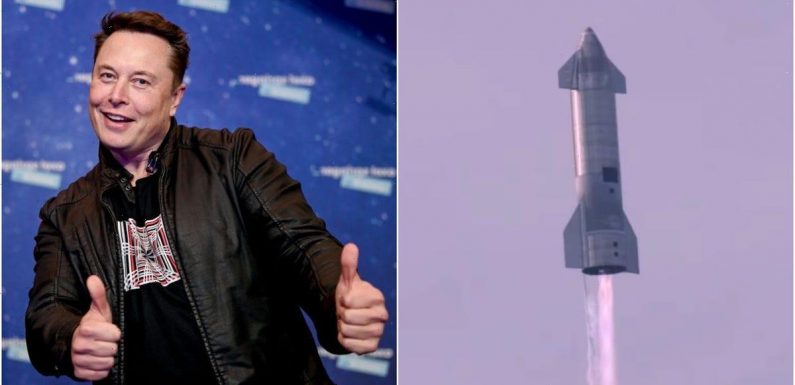
- NASA is awarding SpaceX an exclusive contract to land humans on the moon.
- The company’s Starship spaceship will carry NASA’s Artemis astronaut missions.
- SpaceX, founded by Elon Musk, beat out Jeff Bezos’ Blue Origin for the contract.
- See more stories on Insider’s business page.
NASA has picked SpaceX to land astronauts on the moon for the first time since 1972, the agency announced on Friday.
Clinching the lunar-landing contact means SpaceX’s Starship spaceship will fly astronauts to the moon for NASA’s Artemis program, which seeks to put boots on the lunar surface by 2024. NASA has said that mission will include the first woman and the first person of color to reach the moon.
The SN10 Starship prototypes soars above Boca Chica, Texas, March 3, 2021.SpaceX
The company beat out two competitors for the contract, Jeff Bezos-founded Blue Origin and defense contractor Dynetics. The Washington Post’s Christian Davenport, who reported the new contract ahead of NASA’s announcement, added on Twitter that the $2.9 billion SpaceX bid was much lower than the competitors’ bids.
Securing the lunar landing contract puts SpaceX CEO and founder Elon Musk ahead of Bezos in the billionaire space race. NASA was expected to choose two out of the three finalists to make the landing system, but settled on just SpaceX, according to The Post.
Ars Technica’s senior space editor, Eric Berger, wrote on Twitter that awarding the contract solely to SpaceX “is going to be hugely unpopular in Congress,” and said that “one big reason” for the sole contract was “limited Congressional funding.”
Starship is undergoing a spectacular testing process
From left to right: The SN8, SN9, and SN10 explosions.Gene Blevins/Reuters; SPadre.com
SpaceX has been launching prototypes of the Starship spaceship from its rocket-testing facilities in Boca Chica, Texas. Four prototypes have flown to high altitudes — at least 6 miles above the ground — and exploded or fallen apart upon their return to Earth. The prototypes have successfully demonstrated the vehicle’s ability to fly, then control its belly-flop fall back to Earth using four wing flaps.
The company hopes to nail the landing and get Starship to orbit by the end of the year. That timeline is ambitious, especially since the company will likely have to conduct an environmental review in order to get an orbital-launch license from the Federal Aviation Administration.
Eventually, a roughly 23-story booster called Super Heavy would heave the Starship spaceship toward orbit. Musk has plans for Starship-Super Heavy beyond the moon. Eventually, has said, he plans to build 1,000 Starships in order to carry people and cargo to Mars and establish a settlement there.
Source: Read Full Article